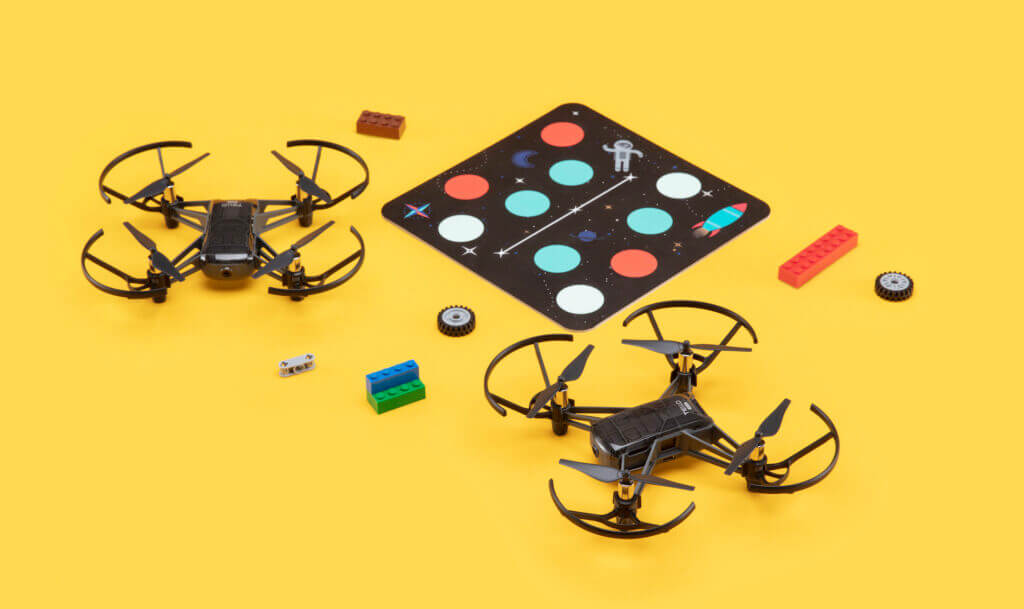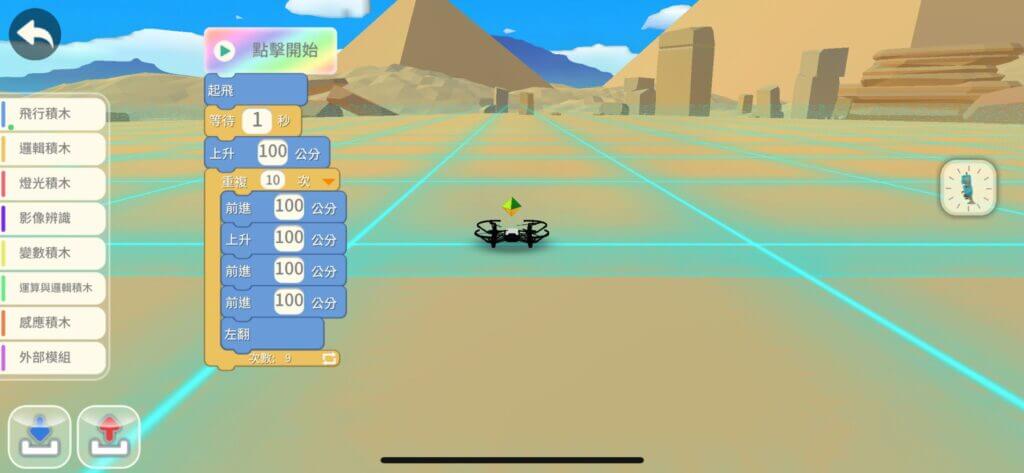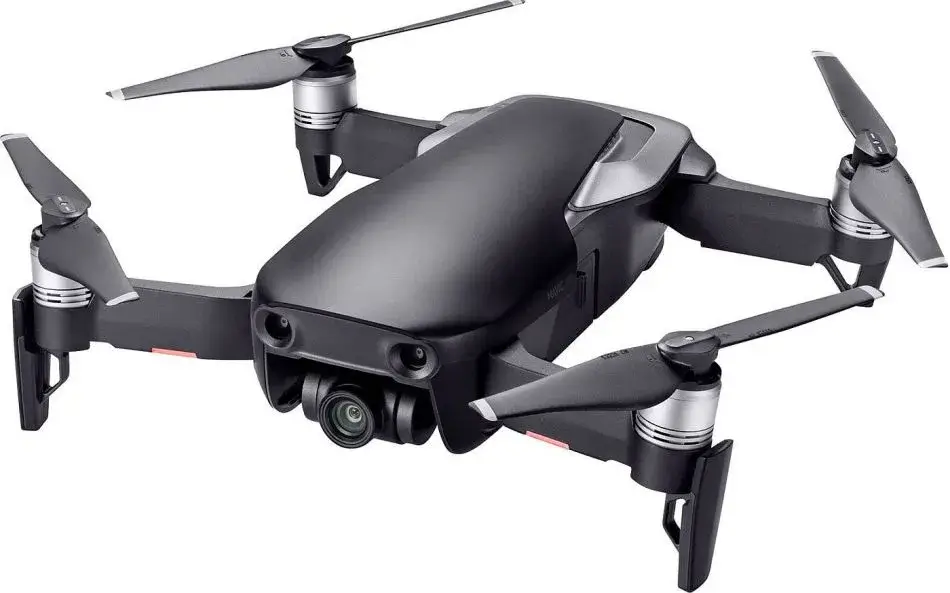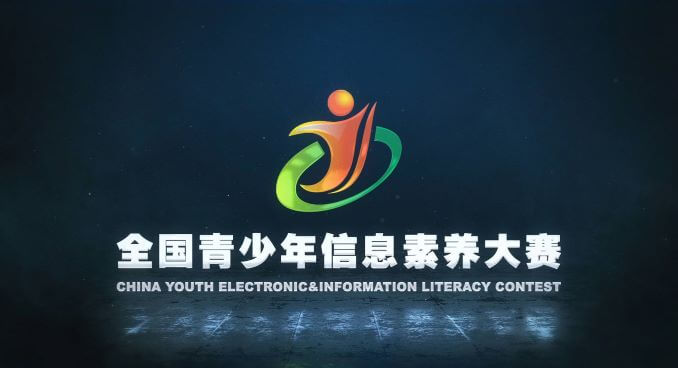Achieve national certification and national competition elite
Drone Programming Course
Vinci AI's "UAV Programming Course" aims to provide students with a learning path that combines national-level skill certification with participation in national competitions. This course helps students prepare for the "National Youth Drone Technical Grade Examination", and also participated in the "National Youth Information Literacy Competition - Unmanned Aerial Vehicle Theme Competition" (white list competition approved by the Ministry of Education). As the official partner of the above-mentioned level examinations and competitions in Hong Kong, Insight is committed to supporting students to learn and improve their skills for both goals in one course through its curriculum system and professional models, and promoting their joint development in academic certification and practical application.
- One course, two tracks:At the same time, prepare for the nationalDrone Technical Level Examination" and the official "National Youth Information Literacy Competition"Drone racing."
- Official Partner:Official partner of the China Electronics Society's "Grade Examination" and "Information Literacy Competition" in Hong Kong, providing students with the most direct examination and competition support.
- Comprehensive teaching support:The course content and professional models fully correspond to the latest examination syllabus and competition rules, helping students to master the examination and competition skills.
- Authoritatively recognized platform:Assist students to obtain national and EXIN international dual certifications, and participate in the "white list" national competitions recognized by the Ministry of Education, effectively improving their academic and scientific and technological practice background.

National Youth Drone Technical Grade Examination
The National Youth Drone Technical Level Examination is hosted by the China Electronics Society and is open to young people aged 8-18. The examination content includes theoretical knowledge of drones and practical programming skills, aiming to improve the scientific and technological literacy and innovation ability of young people. Those who pass the examination can obtain dual certification from the China Electronics Society and the EXIN International Information Science Examination Society, laying a solid foundation for their further studies and future development.
Suitable for children and students aged 8 to 18 years old.
Candidates must use a programming drone kit that has been evaluated and certified by the China Electronics Society and that meets the requirements of the corresponding exam level. In terms of development software, students can use graphical programming software that can complete the development of the corresponding drone flight controller program.
The teaching hardware used in the drone programming courses provided by Vinci AI all meet the requirements of the "National Youth Drone Technical Level Examination" for programming drone kits.
This test standard aims to comprehensively evaluate the skills of young people in drone production, programming, control and related knowledge. It focuses on practical application ability, guides young people to establish engineering and systematic logical thinking, and improves their scientific and technological literacy and innovation ability. The assessment content is divided into three levels: understanding, comprehension and mastery.
Each exam level includes two subjects: theoretical knowledge and practical operation (the practical part of the first-level exam may be adjusted according to the latest guidelines, while the second level and above explicitly include practical operation).
Theoretical knowledge:
- Examination form: Online closed-book computer examination.
- Question types: mainly include single-choice questions, multiple-choice questions and true-or-false questions.
- Level 1 Assessment Focus: Understand the concept, classification, use, development history and current status of drones; master the common terminology of drones and the structure and functions of each part of drones; gain a preliminary understanding of the power system, motors, propellers and batteries of drones.
- Secondary Assessment Key Points: Gain an in-depth understanding of the drone's power system, motors, propellers, and battery-related knowledge; master the drone's control system, flight principles (including Bernoulli's principle), control modes, and flight principles of quad-rotor drones; understand the functions and principles of drone-mounted equipment, and master the use of variables in programming.
Practical operation:
- Examination format: Candidates need to independently or according to the guidance complete the construction of the drone (depending on the level requirements), debugging, graphical or code programming and actual flight missions according to the specific project requirements given on site.
- Level 1 Assessment Focus: Control the drone to fly according to the specified graphics (such as regular pentagon, five-pointed star, etc.) through simulation programming; complete the drone programming actual flight according to on-site requirements (such as flying around a pole, square, etc.).
- Secondary Assessment Key Points: Control the drone to fly according to specified graphics (such as a five-pointed star, circle, etc.) through simulation programming; complete the actual flight of the drone according to on-site requirements. The tasks may include infrared sensing applications, passing through round gates, fixed-point landing, etc.
- Registration channels in Hong Kong:Vinci AI is the only official examination partner of the China Institute of Electronics for the "National Youth Drone Technical Level Examination" in Hong Kong.
- Registration Period:For specific registration and examination schedule, please contact Yunsi Intelligence for inquiries
The exam is usually held in June and December every year. Please pay attention to the official announcement of the China Institute of Electronics or Insight for the latest exam dates.
- Two-factor authentication: Candidates who pass the exam will receive a nationally recognized certificate issued by the China Institute of Electronics (CIE). At the same time, by applying, they will also have the opportunity to obtain an international certification issued by the International Information Science Examination Society (EXIN), thus achieving "one test, two certificates".
- Certificate production and inquiry: Approximately 30 working days after the exam, candidates can check their scores through official channels. Certificates will be distributed after they are completed.
- Certificate Collection in Hong Kong: For candidates who take the examination in Hong Kong and pass the examination, their "China Institute of Electronics" certificate and the "EXIN" international certification certificate applied for will be uniformly issued through Vinci AI The specific time and method of collection will be notified separately by Yunsi Intelligence.

The Chinese Institute of Electronics (CIE) was established in 1962. It is a public institution directly under the Ministry of Industry and Information Technology and an important part of the China Association for Science and Technology. As a national 5A-level academic organization, the society has a strong official background and authority in the field of electronic information, and is committed to promoting technological development and cultivating professional talents.
Challenge the national stage
National Youth Information Literacy Competition - Unmanned Aerial Vehicle Theme Competition
In addition to authoritative skill level certification, Yunsi Intelligence has also opened up a path for your students to enter the top national competition - the "National Youth Information Literacy Competition - Unmanned Aerial Vehicle Theme Competition".
Official background, recognized by the Ministry of Education:
- This competition is one of the key events of the "National Youth Information Literacy Competition", which belongs to the information literacy competition of the World Robot Conference Youth Robot Design and Information Literacy Competition.
- According to the "Management Measures for National Competition Activities for Primary and Secondary School Students" issued by the Ministry of Education and other departments, this competition project is an officially recognized "white list" event with great credibility and value.
- Chinese Institute of ElectronicsAs an important promoter and official supporter, we ensure the professionalism and authority of the event.
Tournament Highlights and Structure:
- Competition Theme: "Passion, speed, surpass yourself".
- Category:According to the academic stage, it is divided into primary school group, junior high school group, and high school group (including secondary vocational school).
- Entry Format: Register as an individual.
- Promotion process: It includes three levels: preliminary round (online qualifiers), semi-finals (regional qualifiers) and finals (national finals).
Main competition tasks :
- Drone obstacle course: Comprehensively test the contestants' unmanned aerial vehicle control ability, psychological quality and adaptability. They need to control the drone to cross various obstacles and complete specific tasks.
- Unmanned Aerial Vehicle Programming Challenge: The focus is on examining students' programming ability, route planning and ability to solve practical problems. They need to control unmanned aerial vehicles through programs to complete complex tasks such as material acquisition, transportation, circular gate crossing, command arrow recognition, etc.
One-stop solution, dual-track examination and competition
Yunsi Intelligent "Drone Programming Course"
Comprehensive coverage of course content:
- Theoretical knowledge system:The course content not only covers the drone concepts, structures, flight principles, terminology, motors, blades, batteries, control systems, Bernoulli's theorem, programming variables and other knowledge points required for the first and second levels of the "National Youth UAV Technical Level Examination", but also meets the requirements of the "National Youth Information Literacy Competition" for drone theoretical knowledge.
- Programming skills development: From Scratch graphical programming to Python code programming, students can progress step by step, not only to cope with the programming flight tasks of the grade test (such as regular pentagons, five-pointed stars, poles, squares, infrared sensors, passing through round gates, fixed-point landing, etc.), but also to master the complex programming logic required for the "Unmanned Aerial Vehicle Programming Challenge" competition, such as autonomous flight, task sequence execution, image recognition basics (such as command arrow recognition), precision landing, etc.
- Practical flight training: The course includes a large number of practical exercises, including simulated flights and real flights, which directly correspond to the actual flight items of the level test, and strengthen students' precise control and obstacle-crossing capabilities required to participate in the "Unmanned Aerial Vehicle Obstacle Competition" (such as passing through round gates of different shapes, fixed-point delivery, etc.).

- Learn drone programming techniques
- Understanding the basics of drones and their everyday applications
- Training logical thinking and analytical skills
- Enhancing organizational abilities, and promoting teamwork

Professional models, meeting double standards
The teaching drones provided by Yunsi Intelligence have been carefully selected and tested, and their design and performance parametersAt the same time, it meets the kit requirements of the "National Youth Drone Technical Level Examination" and the technical specifications of the participating models in the "Unmanned Aerial Vehicle Obstacle Competition" and "Unmanned Aerial Vehicle Programming Challenge" in the "National Youth Information Literacy Competition".(Such as weight limit, motor type, battery specifications, wheelbase, height-fixing/optical flow positioning function, image recognition capability, and necessary safety wing design, etc.) Students can use the same model to effectively prepare for both exams and competitions at the same time without having to purchase additional equipment or adapt to different equipment.
Fun AI fact
What is a drone? And what is its relationship with AI?

A drone, also known as an unmanned aircraft or remote-controlled aircraft,is a flying vehicle capable of flight without a human pilot on board.It is typically controlled by a remote controller or a pre-programmed system. Drones can come in various sizes and serve different purposes, ranging from small toy drones to large professional aerial cameras, and even high-end drones used for military or scientific research.
Drones have a close relationship with artificial intelligence (AI). AI is a field of study that focuses on enabling machines to simulate and perform human-like intelligent activities.In the field of drones, AI technology can be applied to enhance their autonomy and intelligence..
AI enables drones to have the capability of autonomous flight,autonomous navigation, obstacle avoidance, and mission execution.For example, through machine learning and deep learning techniques, drones can learn to recognize and avoid obstacles, enabling safer and more precise flights. Additionally, AI can be applied to image processing and analysis, allowing drones to automatically identify and track targets for aerial photography, surveillance, search and rescue missions, and more.
Furthermore, AI technology enables collaborative flights of multiple drones, where multiple drones can work together in the air for distributed missions and cooperative search and rescue activities. This requires communication and coordination among the drones, as well as intelligent decision-making based on real-time data and environmental changes.

AI artificial intelligence courses for primary and secondary schools
Why choose Vinci AI?
University lecturer teaching team
VInci AI's teaching team is rich in experience, including university teachers who teach master's AI courses in various colleges and universities.
Curriculum developed by PhD-level experts
Vinci AI's PhD-level AI expert team, providing the most professional artificial intelligence courses
Recognized by research institutions
The teaching platform developed by Vinci AI has received support from Cyberport. Vinci AI is also a STEM education partner of the Productivity Council.
Want to schedule on-campus classes?
Contact our consultants
Vinci AI offers on-campus courses, including STEM Day events, competition training, and after-school programs. We welcome you to contact our expert consultants to arrange suitable topics and formats for your needs.





